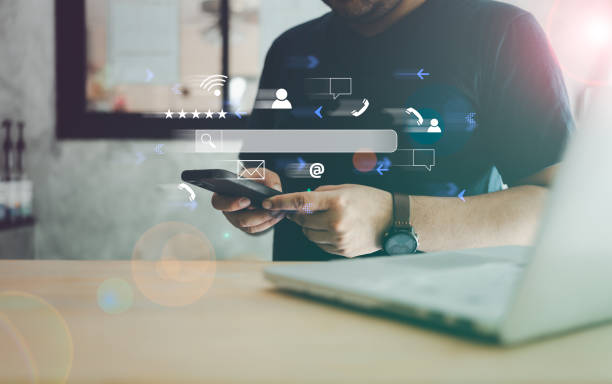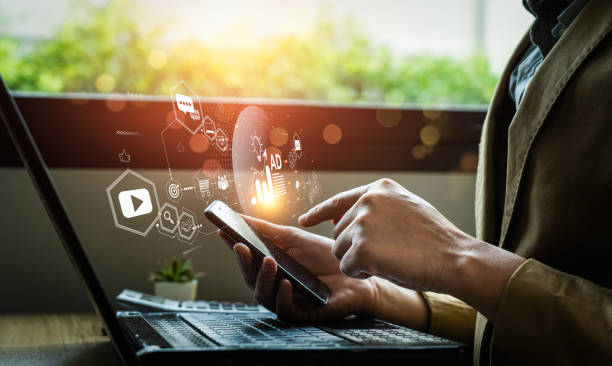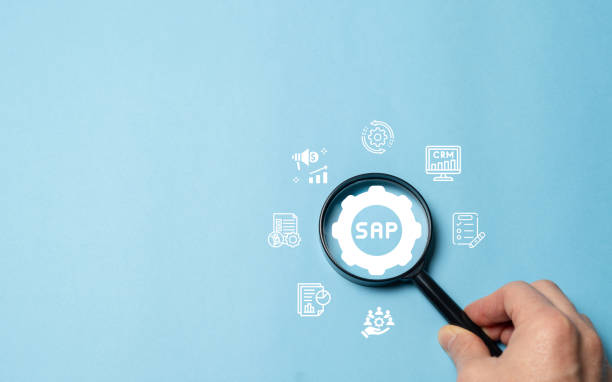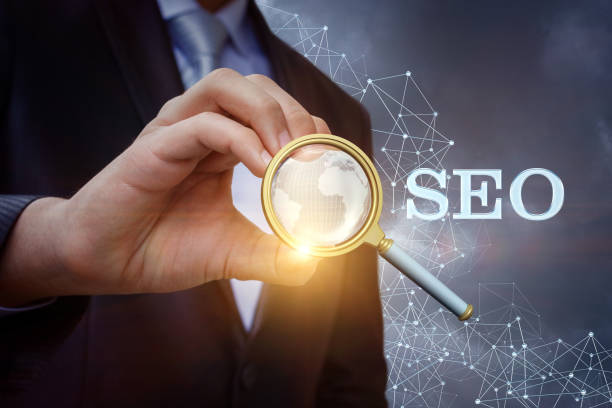What is On-Page SEO and Why is it Important?

On-page SEO, sometimes also referred to as On-Page SEO, refers to a set of techniques and actions performed within your website to improve its ranking in search engine results like Google.
These actions include optimizing content, title tags, meta descriptions, URL structure, and more.
But why is on-page SEO so important? Simply put, on-page SEO helps search engines better understand your website’s content and recognize its relevance to the search queries users enter.
When search engines deem your content relevant and valuable, they are likely to rank your site higher in search results.
SEO is a complex and ongoing process, but on-page SEO is one of its most critical components.
Without proper on-page SEO, even the best content might get lost and unnoticed in the vast sea of web pages.
Therefore, by optimizing your website’s internal elements, you can ensure that your content reaches your target audience and attracts more organic traffic to your site.
This will ultimately lead to increased brand awareness, more sales, and overall business success.
In today’s competitive world, neglecting on-page SEO can be a big mistake.
By investing in on-page SEO, you can outperform your competitors and solidify your position on the first page of search results.
Remember that on-page SEO is a dynamic process and must be continuously updated with changes in search engine algorithms.
Is your online sales not as expected? With Rasawweb, solve the problem of low sales and poor user experience forever!
✅ Increase visitor-to-customer conversion rate
✅ Create an enjoyable user experience and build customer trust
⚡ Act now to get a free consultation!
Keyword Research: An Essential Step in On-Page SEO

Keyword research is the foundation of every successful on-page SEO strategy.
First and foremost, you need to understand what phrases and words your target audience uses to search for information related to your business.
By identifying these keywords, you can optimize your content around them and increase the likelihood of your site appearing in search results.
There are many tools available for keyword research, including Ahrefs, Moz Keyword Explorer, and Keywords Everywhere.
These tools help you find search volume, competition levels, and related keywords.
After identifying keywords, you should strategically place them throughout your content.
This includes using keywords in title tags, meta descriptions, subheadings, main body text, and image alt text.
However, you must be careful not to overuse keywords, as this can lead to penalties for your site from search engines.
Instead of excessively repeating keywords, try to create valuable and relevant content that naturally incorporates your target keywords.
Remember that keyword research is an ongoing process.
As user behavior and search engine algorithms change, you should regularly review and update your keywords.
By conducting accurate and up-to-date research, you can ensure that your content is always visible to your target audience and ranks high in search results.
Ultimately, on-page SEO, using the right keywords, helps you attract more organic traffic to your site and boost your business.
Optimizing Content for Users and Search Engines

Content is king, but optimized content is the king of kings! Creating high-quality and valuable content is one of the most important factors in on-page SEO.
But simply producing content is not enough.
You need to ensure that your content is optimized for both users and search engines.
Quality content provides accurate, relevant, and engaging information to users.
This type of content encourages users to spend more time on your site, visit more pages, and ultimately convert into customers.
To optimize content for search engines, you should use appropriate keywords, write engaging titles and subheadings, use high-quality images and videos, and design your content structure to be easy to read.
You should also pay attention to the length of your content.
Generally, longer content tends to rank better in search results, but you must ensure that your content remains engaging and relevant.
Additionally, you should regularly update your content.
Search engines prefer fresh and updated content.
By updating your content, you can ensure that your site always ranks high in search results.
Remember that the ultimate goal of on-page SEO is to provide the best possible user experience.
By creating high-quality and optimized content, you can satisfy both users and improve your site’s ranking in search results.
Striking a balance between user needs and search engine requirements is the key to success in on-page SEO.
| Element | Description | Importance |
|---|---|---|
| Page Title (Title Tag) | The title of the page displayed in search results. | Very High |
| Meta Description | A short description of the page content displayed in search results. | High |
| H1-H6 Headings | Page titles and subheadings for content organization. | Medium |
| Image Alternative Text (Alt Text) | Text description for images. | Medium |
| URL | Page address. | Medium |
Optimizing Title Tags and Meta Descriptions

Title Tags and Meta Descriptions are two crucial elements in on-page SEO that play a significant role in attracting users from the Search Engine Results Page (SERP) to your website.
A title tag is the main title of your page, displayed at the top of the browser and in search results.
A meta description is a brief summary of your page’s content, displayed below the title in search results.
Both of these elements should be engaging, relevant, and contain your main keywords.
A good title tag should accurately describe the page’s content, capture users’ attention, and encourage them to click on your link.
It should also be of an appropriate length (typically less than 60 characters) to be fully displayed in search results.
A good meta description should provide more information about the page’s content, highlight the benefits of visiting the page, and entice users to click.
It should also be of an appropriate length (typically less than 160 characters) to be fully displayed in search results.
By optimizing title tags and meta descriptions, you can increase your click-through rate (CTR) in search results and attract more traffic to your site.
This, in turn, will lead to an improvement in your site’s ranking in search results.
Remember that title tags and meta descriptions are the first things users see about your site.
By creating engaging and relevant tags, you can make a positive impression on users and encourage them to visit your site.
Did you know that 94% of users’ first impressions of a business are related to its website design? With professional corporate website design by **Rasawweb**, turn this first impression into an opportunity for growth.
✅ Attract more customers and increase sales
✅ Build credibility and trust in the eyes of the audience⚡ Get a free website design consultation!
Optimized and User-Friendly URL Structure

URL structure plays an important role in on-page SEO and user experience.
An optimized URL should be short, descriptive, and contain the main keywords of the page.
Long and complex URLs are more difficult for both users and search engines to understand.
For example, a good URL might look like this: `www.example.com/on-page-seo` while a bad URL might look like this: `www.example.com/page?id=123&category=456`.
You should also avoid using uppercase letters, special characters, and spaces in your URLs.
Instead of spaces, use hyphens (-).
A logical and hierarchical URL structure helps search engines better understand your site’s structure and index your pages more effectively.
For example, you can use categories and subcategories in your URL: `www.example.com/blog/seo/on-page-seo`.
Furthermore, you should avoid changing your page URLs, as this can lead to a loss of your site’s ranking in search results.
If you must change a URL, be sure to use a 301 redirect to guide users and search engines to the new URL.
By creating an optimized and user-friendly URL structure, you can both improve your site’s ranking in search results and enhance the user experience.
Remember that a good URL should be understandable and memorable for both users and search engines.
Optimizing Images and Videos

Images and videos are important elements in your website’s content that can enhance user experience and increase your site’s visual appeal.
However, if your images and videos are not optimized, they can slow down your site’s loading speed and negatively impact your SEO.
To optimize images, you should use an appropriate format (such as JPEG for photos and PNG for graphics), reduce file size, and use alternative text (Alt Text).
Alt text is a brief description of the image that is displayed if the image fails to load.
Also, search engines use alt text to understand the content of the image.
To optimize videos, you should use a suitable platform (such as YouTube or Vimeo), use engaging titles and descriptions, and use appropriate tags.
You should also optimize your videos to display correctly on different devices.
By optimizing images and videos, you can increase your site’s loading speed, improve user experience, and enhance your site’s ranking in search results.
Remember that images and videos are an excellent opportunity to capture users’ attention and convey your message.
By optimizing these elements, you can make a positive impact on users and encourage them to interact with your site.
On-page SEO for images, using ALT tags, along with improving user experience, helps improve the site’s ranking.
The Importance of Page Loading Speed and Mobile SEO

In today’s world, page loading speed and mobile SEO are two critical factors in on-page SEO that cannot be overlooked.
Users expect web pages to load quickly.
If your site is slow, users may not wait and will go to another site.
Page loading speed has a direct impact on user experience, bounce rate, and your site’s ranking in search results.
To improve page loading speed, you should use optimized images and videos, use fast hosting, enable caching, and use a Content Delivery Network (CDN).
You should also optimize your site for mobile devices.
Today, most users access the internet via mobile devices.
If your site is not optimized for mobile devices, you will provide a poor user experience for these users.
Mobile SEO means optimizing your site for proper display and performance on mobile devices.
To optimize your site for mobile devices, you should use a responsive design, adjust font and button sizes, and use optimized images and videos.
By improving page loading speed and mobile SEO, you can enhance user experience, reduce bounce rate, and improve your site’s ranking in search results.
| Factor | Description | SEO Impact |
|---|---|---|
| Page Loading Speed | Time required for the page to fully load. | Positive (high speed), Negative (low speed) |
| Responsive Design | Ability to display correctly on various devices. | Positive (optimized), Negative (not optimized) |
| Font and Button Size | Readability and ease of use on mobile. | Positive (appropriate size), Negative (inappropriate size) |
| Use of AMP | Faster version of pages for mobile. | Positive (used), Neutral (not used) |
Internal and External Link Building

Internal and external link building are two important strategies in on-page SEO that help search engines better understand your site’s structure and increase its authority.
Internal link building refers to creating links between different pages within your site.
This helps search engines find important pages on your site and understand the connections between different pages.
Internal linking also helps users navigate your site easily and find the information they need.
External link building refers to receiving links from other sites to your site.
External links act as a vote of confidence from other sites to your site.
The more high-quality and relevant external links your site has, the more authority your site will have with search engines.
However, you must be careful to avoid buying links, as this can lead to penalties for your site from search engines.
The best way to get external links is to create high-quality and valuable content that other sites will want to link to.
On-page SEO by optimizing internal and external links helps improve the site’s ranking in search results.
Remember that internal and external link building is an ongoing process.
You should regularly review and update your internal links and look for opportunities to receive links from other sites.
Did you know that your company’s website is the first point of contact for 75% of potential customers?
Your website is the face of your brand. With **Rasawweb**’s corporate website design services, build an online presence that earns customer trust.
✅ Create a professional and lasting image for your brand
✅ Attract target customers and increase online credibility
⚡ Get a free consultation from **Rasawweb** experts!
Optimizing Site Structure and Sitemap

Site structure and sitemap are two important elements in on-page SEO that help search engines crawl and index your site more effectively.
A logical and hierarchical site structure helps search engines find important pages on your site and understand the connections between different pages.
A good site structure should be simple, understandable, and easy to navigate.
A sitemap is an XML file that includes a list of all pages on your site.
A sitemap helps search engines find all pages on your site, even those that may not be easily accessible through internal links.
By creating a logical site structure and providing a sitemap to search engines, you can ensure that all pages on your site are properly indexed and your site’s ranking in search results improves.
On-page SEO will only be successful if the site structure is optimized.
Remember that site structure and sitemap are two important elements in SEO that should not be overlooked.
You should regularly review and update your site structure and ensure that your sitemap is always up-to-date.
Monitoring and Continuous Improvement of On-Page SEO

On-page SEO is not a one-time process, but rather an ongoing process that requires continuous monitoring and improvement.
After implementing on-page SEO actions, you should regularly review your site’s performance and see if these actions have had an impact on your site’s ranking in search results.
Many tools are available for monitoring SEO performance, including Google Search Console and Google Analytics.
These tools help you track your site’s organic traffic, identify the keywords users use to reach your site, and find errors on your site.
By regularly reviewing your site’s performance, you can identify the strengths and weaknesses of your on-page SEO strategy and take the necessary steps to improve it.
For example, if you notice that your site’s organic traffic has decreased, you should check if search engine algorithms have changed.
You should also check if your competitors have taken better SEO actions.
With continuous monitoring and improvement of on-page SEO, you can ensure that your site always ranks high in search results and attracts more organic traffic to your site.
Remember that on-page SEO is a dynamic process and must be continuously updated with changes in search engine algorithms.
Frequently Asked Questions
| No. | Question | Answer |
|---|---|---|
| 1 | What is On-Page SEO? | On-Page SEO refers to a set of actions performed within a website to optimize its pages to achieve a better ranking in search results. |
| 2 | What is the most important factor in On-Page SEO? | High-quality, relevant, and comprehensive content that meets user needs is the most important factor in On-Page SEO. |
| 3 | What role does the Title Tag play in On-Page SEO? | The title tag is one of the most important factors that tells search engines and users what the page content is about. It should include the main keyword and be engaging. |
| 4 | How important is the Meta Description tag? | Although it doesn’t directly affect ranking, it is highly effective on the click-through rate (CTR) in search results and encourages users to visit the page. |
| 5 | How is image optimization done in On-Page SEO? | By using appropriate alt tags, compressing image size to increase loading speed, and meaningfully naming image files. |
| 6 | What is the importance of using headings (H1, H2, H3) in On-Page SEO? | Headings help structure content, increase readability, and assist search engines in understanding the hierarchy and sub-topics of the content. |
| 7 | What is Internal Linking and what are its benefits? | Internal linking means creating links between different pages of a website. This helps distribute authority, improve user navigation, and assist search engine crawling. |
| 8 | Where should the Focus Keyword be placed on the page? | The main keyword should be placed in the title tag, meta description, H1, first paragraph, and naturally throughout the text and, if possible, in the URL address. |
| 9 | What effect does duplicate content have on On-Page SEO? | Duplicate content can harm a site’s ranking and confuse search engines as to which version is original, potentially leading to it being identified as spam. |
| 10 | How important is page loading speed in On-Page SEO? | Page loading speed is an important ranking factor and directly affects user experience. Slow pages lead to an increase in user bounce rate. |
And other advertising services of Rasawweb Advertising Agency:
- Smart Direct Marketing: Designed for businesses seeking to increase click-through rates through SEO-driven content strategy.
- Smart UI/UX: A dedicated service for growth in customer behavior analysis based on marketing automation.
- Smart Custom Software: A combination of creativity and technology to increase click-through rates by using real data.
- Smart Advertising Campaign: A dedicated service for campaign management growth based on marketing automation.
- Smart Marketing Automation: An innovative platform for improving sales increase with precise audience targeting.
And over hundreds of other services in the field of internet advertising, advertising consultation, and organizational solutions.
Internet Advertising | Advertising Strategy | Advertorials
Resources
Comprehensive On-Page SEO GuideContent SEO StrategySEO Analysis ToolsComprehensive SEO Guide
? Transform your business in the digital world with Rasawweb Afarin Digital Marketing Agency. We pave your path to success by offering comprehensive services including website design with a modern user interface, professional SEO, and social media management.
📍 Tehran, Mirdamad Street, next to Bank Markazi, Southern Kazeroun Alley, Ramin Alley, No. 6

